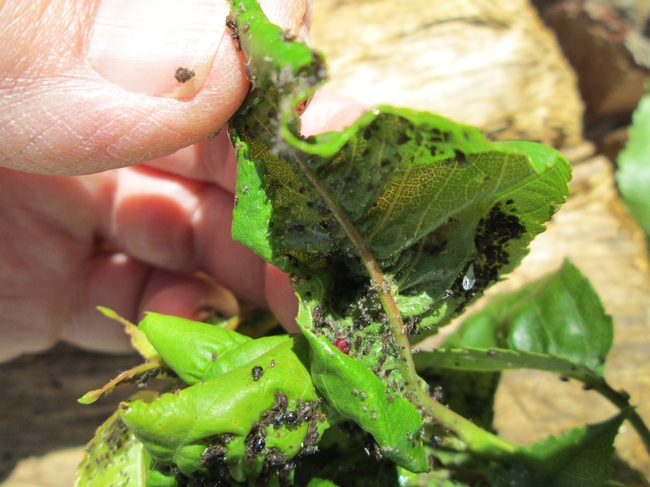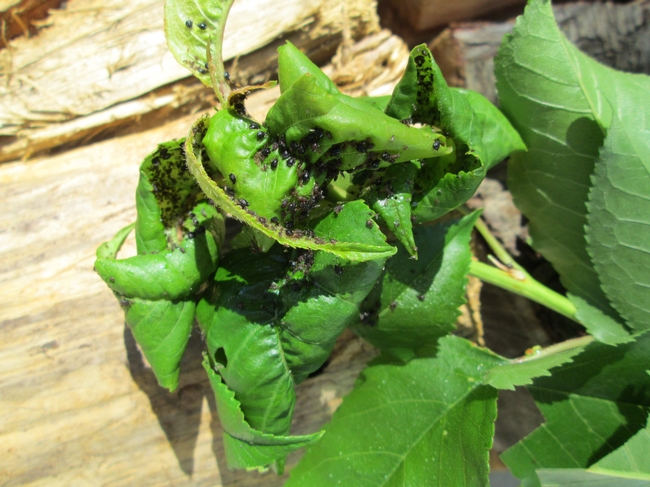At this time of year it pays to check any cherry trees for infestations of black aphids, Myzus cerasi. These appear most usually on the tips of the terminal shoots, but also on the spurs and they tend to prefer sweet cherry varieties over the sour ones. Leaves will crinkle and curl over, and become sticky with aphid secretions which in turn encourage the development of sooty mold that in severe cases may render the fruit inedible.
These aphids are shiny black and about 1/8-inch long. They overwinter as eggs on the tree bark and emerge at bud break when they feed on tender shoots, injecting a toxin into the leaves which causes them to curl thus protecting the aphids' increasing numbers. 
UC IPM recommends using dormant oil sprays in late winter, and hosing off with jets of water any aphids that are obvious before the leaves curl. As with all aphid infestations keep an eye open for ants traveling up the tree trunk – a sure sign that they have found a good supply of honeydew. Natural predators such as hover flies, lady beetles, and lacewings should be encouraged, but once the leaves curl over, these insects appear not to be so prevalent. At that point water jets really are not effective, either.
On a young tree I have used a bucket of soapy water and bent the stems into it so that the affected regions are well submerged, but this is not possible on a large tree. Sometimes leaves are so infested that ones best option is to simply prune off the infected twigs, placing them directly into a plastic bag, and disposing of it.
Other cultural measures which may help are avoiding lush growth in the spring by not over-watering or using high nitrogen fertilizers. The base of the tree should be kept clear of weeds or other plants that may act as summer hosts.
